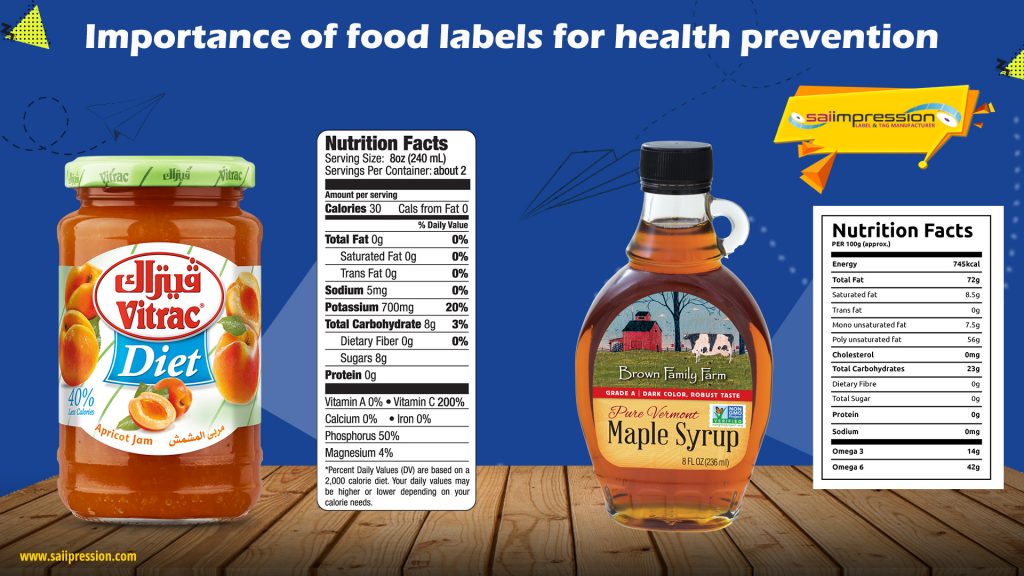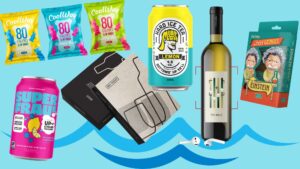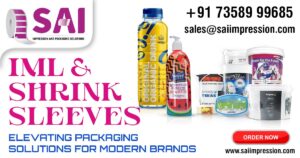Why are Food Labels Important for Health Prevention?

Food labels are used for packaging and carry vital information about a particular food product, the brand it belongs to, its ingredients, manufacturing/ best-buy before dates, and other crucial details.
These food labels help consumers make better choices and informed decisions on what they are consuming on an everyday basis, and the food’s nutritional value for the health benefits of themselves and their families.
For instance, food labeling breaks down the amount of salt, sugar, carbs, proteins, vitamins, fat, and other nutrients it contains in a systematic listed format.
On the whole, food labeling contains significant information like:
- Brand logo
- Name & address of the manufacturer
- Nutrients
- Calories per serving
- Percent daily value
- Food allergens
- Coloring & artificial flavors
- Preparation guidelines (or) Directions of use
- Barcode
- Manufacturing/ Best-use-before dates
- Product cost
Contents
Prime Importance of Reading Food Labels:
Labeling on food products is a legal requirement in several countries around the globe as it contains information that directly impacts the health and well-being of the buyer.
Hence, food regulatory agencies stress that consumers read and understand the food labels to be cautious about what goes into their body and regarding the safety of the packaged food items.
Here’s clubbing some of the key reasons behind the vitality of reading food labels.
(1) To Make Lifestyle Choices
A customer’s attention to food labels helps him thoroughly apprehend how the ingredients and its nutrients will lead him to support his dietary plans for everyday wellness.
(2) To Keep a Check on Fat/ Sugar Levels
People who are high on sugar and cholesterol levels should be very mindful of their every meal and the information on food labels that reveal the amount of sugars and fat involved in the making, giving a clear picture of how much is safe for consumption.
(3) To Maintain a Calorie Balance
This is another prime benefit of reading the label on food products wherein the calories per serving is printed in most of the packaging, giving consumers an awareness of how much they are eating.
(4) To Affirm the Genuinity of the Packaged Meal
Over the years or even decades, there are brands that have gained the trust of consumers of different age groups. This gives the buyer a feeling of certainty about a particular product.
(5) To Identify the Dates of Use
“Use by” or “best before” dates are very important to determine if a packaged food product is suitable for consumption and it is the food label that mentions this piece of key information.
(6) To be Cautious of Allergens
Foods like eggs, milk, soy, peanuts that may cause an allergic reaction in some people are classified as allergens. Food labels in general should definitely mention these items in its ingredients list as instructed by food and safety administration agencies across countries.
The Use of Food Labels for Health Prevention:
- In the past few decades, public health organizations are stressing upon the importance of consumers reading food labels more than ever. This is due to the fact that increased health complications of the general public due to obesity and unhealthy dietary choices in recent times.
- However, it is not new that food regulatory bodies globally are emphasizing the consumption of wholesome meals that hold great nutrient value to reduce the risk of several chronic diseases among the general public.
- Besides the food choice solely relying on the taste of the packaged item, giving the food label a read is highly mandatory in today’s fast paced lifestyle that often ignores the elements of food products consumed.
- The USA’s FDA (Food & Drug Administration) has time and again made sure it continually regulates the nutritional labeling of packaged food items to mention the amount of sugars, saturated fats, and calorific value in well-readable fonts and sizes that will draw consumer attention.
- Healthy meal choices are a part of everyday living and closely align with comprehending food labels printed on packaged edibles and are a definite means of health prevention in the modern age eating patterns.
- Food regulatory and labeling body of the European Union has also mandated a list of categories to be covered in food labels including the mention of ingredients, allergens, best-use dates, country of origin among others. It also strictly monitors if the information on these packaged foods is legit, accurate, and not misleading.
An Overview of the Food Label Industry:
Food labels aren’t mere brand stickers. They are a descriptive means of food manufacturers communicating with consumers about what is underneath a food product. It can be written, printed, or even embossed in certain cases.
The Codex Alimentarius of the Food & Agriculture Organization defines the code of practice on how food manufacturers should go about the labeling to protect the health of the public.
Be it for online sales, or to be sold on retail in supermarkets and restaurants, food producers are mandated to follow food labeling regulations.
How are Food Labels Printed?
Majority of the food labels undergo a flexographic printing process. This type of printing is used for large-scale food and beverage packing productions in a factory setup. These labels should be printed with utmost precision as it is public health and safety that is concerned.
Next comes the inkjet printing with the use of a primer, which is also a popular means of food label printing. And, talking about digital printing, a dry toner digital press is a popular technique used in the food labeling industry.
While these are the most common types of printing, there are food packing that may involve embossing or stenciling as well. By large,the type of food label printing will vastly vary with the type of food, the brand, and its packaging involved.
Leading Food Packaging Label Manufacturers in the World:
Pressure sensitive labels are the most commonly used type of food and beverage labels around the globe for its easy and effective usage on packaged edibles.
Considering the increasing number of consumer products in today’s scenario, the pressure label manufacturing for food packaging is growing at a steady rate of 3.25 CAGR from 2021 to 2028 with a projected market volume of 113.26 billion by 2028.
Get to know the top food packaging label manufacturers:
- Avery Dennison
- Constantia Flexibles
- Coveris
- CCL Industries
- 3M
- Inland Labels
These are some of the top most food packaging label Manufacturers.
To Summarize,
The food business is massively huge and is something that will never die. Alongside this magnanimous growth is the increased market value of packaging and labeling items that make selling and consumption easier.
Food labels in specific are highly valued for the important information it conveys to the buyer community to make informed decisions and plan dietary choices. By means of tags, stickers, or pressure sensitive labels, food labels can never be ignored for any reason whatsoever and is an important addition to packaged food products that will reach the shelves of retail stores and to consumers’ homes.





